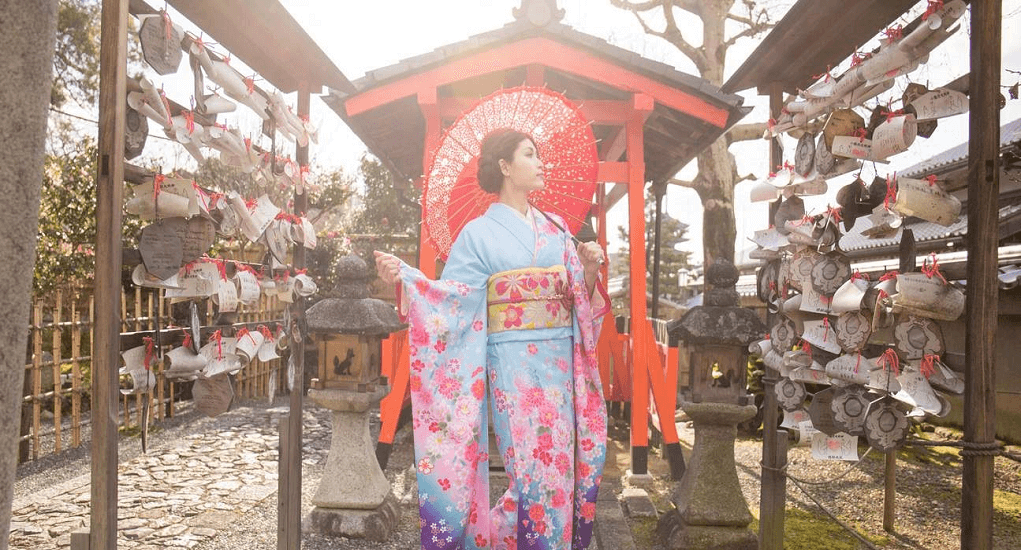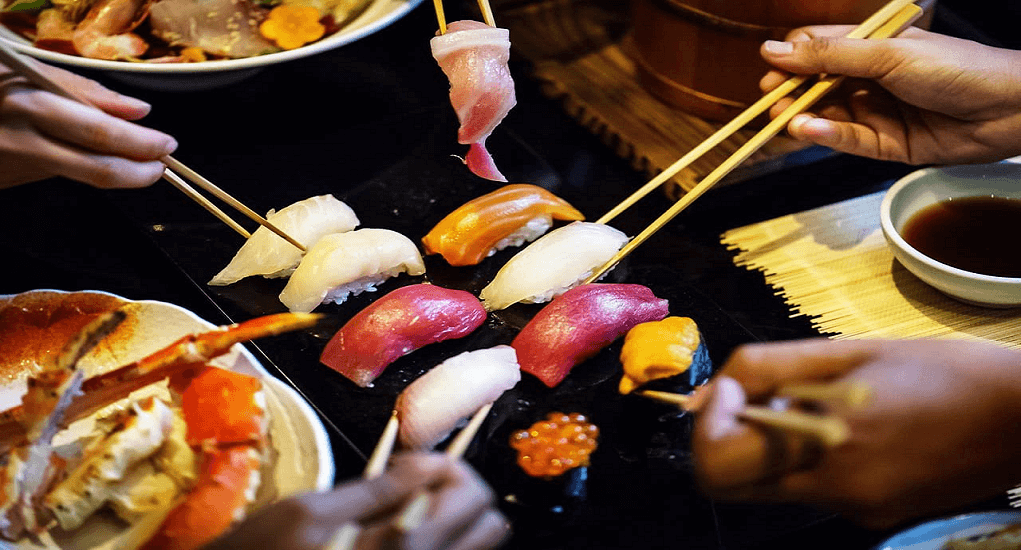Kyoto is often called the cultural city of Japan because it still preserves many of its traditional elements –which can be viewed from the building structure, temples, and even the atmosphere. It is also referred to as the educational city because of its many universities and other educational institutions. If you come to Kyoto, you will feel a completely different air and atmosphere than other places in Japan, like Osaka or Tokyo. If you like the sense of serenity and quiet surroundings, you will like this city so much. Kyoto is surrounded by hills and you are able to find many galleries, museums, and temples. If you want to explore nature, you can do it. But if you want to explore the museums or other places of interest, there are some great options for you like.
Popular Tourist Destinations
There are some perfect spots for single travelers as well as families to explore around. They are fun to explore and each of the spots has its own fun elements. One place will be different from the others, so you can have a memorable time every time you visit each place.
1. Kimono Rent

If you want to know how it feels to wear kimono, you can actually rent it. You can rent it for the whole day and then explore Kyoto wearing it! On the contrary to what you think, renting is the kimono that is pretty affordable. It is advisable, though, to reach the rental service earlier –around 15 minutes – before it opens. You can have a wider kimono selection and maximize the rent. In most areas, you will have to return the kimono by 6 PM.
2. Arashiyama

If you are into nature so much and you like spending the time walking around in the cool temperature and peaceful surroundings, coming to this place will be the perfect option. Arashiyama is very popular during fall foliage and cherry blossom. Because of the natural setting, the place is naturally gorgeous and somewhat artistic. Most people who come here like to enjoy the relaxed walk and the flexibility to explore the areas freely. Some of the places to visit in this area include Iwatayama Monkey Park, Bamboo Forest, and Tenryu-Ji temple. You can easily reach this place by bus or by train. Use Arashiyama Tenruji-Mae bus or Saga JR Arashiyama Station.
3. Kyoto Imperial Palace

Kyoto was the capital city of Japan before it was moved in 1868 to Tokyo. Before that, this palace was used by the imperial family. Visitors are allowed to explore the palace either by joining a tour or by themselves. They don’t need to pay anything because it is free – and they don’t need to make an appointment before either.
The palace opens from Tuesdays to Sundays, and it is closed on Mondays. The scheduled tour lasts for 50 minutes, and everyone can enjoy Chinese or English exploration. Just like the entrance fee, this tour is also free. You can easily reach the palace by Katasuma Marutamachi bus.
4. The Philosopher’s Walk

The unique aspect of this area is the pedestrian path following the cherry trees that are lining along the canal. It was named that way from Nishida Kitaro, a professor and Japanese philosopher who likes to walk the path on a daily basis for meditation. It starts from Silver Pavilion or Ginkakuji and ends in the Nanzenji area. If you are looking for a peaceful area with a natural (and beautiful) view, take the Ginkakuji-Mae bus to get there.
5. Kyoto Tower

This is an observation tower that is located right across Kyoto Station. As the tallest construction in Kyoto, it has a lot of restaurants although you can also find some surrounding the station. You should come to the food court, located below the tower, as well as the Ramen Alley, located inside the Kyoto Station on the 10th floor. You can use either the train or bus to reach the tower.
Historical and Cultural Destinations
Kyoto is the place where history and culture are blending themselves quite harmoniously. You can find many historical spots there whether it is in the form of temples, buildings, or museums. If you are into culture and history, there are some places that you can explore.
1. Kinkaku-Ji Temple

Despite its reputation as the Zen Buddhist temple, this structure holds an important role in the history of Kyoto. The temple consists of two floors and the unique thing about it is that the top ones are covered in gold leaf. The temple was built to honor Shogun Ashikaga Yoshimitsu, for his residence. But after his passing, the house was turned into the Zen temple. Besides the classic and majestic construction, the temple has its own harmonious flair. It is nice to have a building that isn’t only beautiful and artistic but also in harmony with the surroundings. Reaching this temple is pretty easy, especially if you are using the bus. Use Kinkakuji-Michi 59, 12, 101, 204, 102, and 205. You won’t miss it.
2. Hokanji Temple

There are several names for this spot, including Yasaka Pagoda. The temple is 46 meters in height and it is located right in the center of the old city. It has a sense of ancient Kyoto, especially when you combine the temple with the surrounding neighborhood. This is also the area where you can find the first-ever tatami Starbuck. There is a sense of balanced old and new atmosphere here, especially with Starbuck. Some people, though, prefer the coffee houses and tea although the millennial generation is definitely in love with Starbuck. Using the bus is the best way to come to this Yasaka Pagoda.
3. Tenryu-Ji Temple

The temple has undergone a long historical journey, started in the 9th century. At that time, Empress Tachibana no Kachiko set up the first Zen temple in Japan, the Danrin-jin temple. The location was right on the current Tenryu-Ji temple. Unfortunately, the temple has been affected by major fires, but it has always been rebuilt again. Then the current Tenryu-Ji temple was set up by Shogun Ashikaga Takuji in 1339 to honor Emperor Go-Daigo. This temple is one of the other 5 Buddhism Zen temples in Kyoto. If you want to go there, use the train or the bus.
4. Nijo Castle

The castle was constructed in 1603 by Ieyasu, a Tokugawa Shogun. It was built for his residence as well as protecting the Kyoto Imperial Palace. The construction took 23 years to complete, so it was finally completed by Iemitsu, Ieyasu’s grandson, 1626. In 1867, Tokugawa Shogunate fell and the castle was temporarily used as the imperial palace. Afterward, the castle was given to the city as a donation and then opened up as the historical site to the public.
Read Also: Hokkaido, the Snow Country in Japan
Religious Destinations
Kyoto is also rich in religious spots and places. Places of worship and prayers can be found in many places in Kyoto.
1. Kiyomizu Temple

This temple has undergone many historical journeys because it was built in 778. Kiyozumi-Dera was constructed on Otowa Waterfall by Tokugawa Iemitsu long before Kyoto became an important city (including capital city) of Japan. It has been burned down several times but it is always been rebuilt and reconstructed again. The current construction was rebuilt during the Edo period, during the reign of the third Shogun Tokugawa Iemitsu from 1631 to 1633.
One unique aspect of this temple is that it has many streams and they are all separated. Each stream is believed to have its own purpose. When people are praying and then drinking the water, they can achieve success at school, improved love life, and life longevity. Visitors are allowed to drink the water by using the cups provided there. If you want to reach the temple, using the bus will be the best way.
2. Yasaka Shrine

Because of its location in the Gion district, it is also known as Gion Shrine. The shrine itself is located between Higashiyama District and Gion District. This shrine was constructed in 876 to prevent epidemics. At that time, it was believed that Enjoy priest invited the god of illness, Gozu Tenno, to prevent the disasters and other epidemics affecting Kyoto residents. Using the bus will be the easiest way to reach the shrine.
3. Fushimi Inari Taisha

This is the shrine dedicated to the god Inari. One thing that makes it unique is the Thousand Shrine Gates or Senbon Torii that goes unlimited. Each torii has been donated (basically like being given) by a business. This shrine was built in the 8th century by the Hata family to honor the gods of sake and rice. People at that time believed that foxes are Inari’s messengers. That’s why you will see a lot of the statues on the shrine grounds. The easy way to reach the shrine is by train. Take the Keihan line that will end up at Fushimi Inari station.
4. Heian Shrine

In 794 AD, the capital city of Japan was moved from Nara to Kyoto by Emperor Kanmu. He called the new place ‘Heian-Kyo’ meaning ‘eternal peace capital’. And then this shrine was founded as a part of the capital’s city anniversary – to commemorate its 1100th celebration. Use the Kyoto Kaikan Bijutsukan bus to reach this area.
Kyoto Culinary Destinations

Let’s not forget that Kyoto has its own interesting culinary spots. If you want to know the local foods, there are some places to go to.
1. Nishiki Market
If you want to try local cuisine and buy some local products, you have to go to this place. The market stretches for up to five blocks, consisting of more than 100 restaurants and shops. Specialties include local food, tea, Kyoto vegetables, and fresh seafood. If you want to go to this market, use the subway. Get off at Karasuma station and continue by walking for 5 minutes from the station. If you use a bus, choose the one heading to Shijo Karasuma station.
2. Gion District
This area is known for its Geisha entertainers to entertain Yasaka’s shrine visitors. If you want to explore the area, start from Yasaka and simply walk straight. Then you will see the modern shopping area of Shijo-Dori which is full of pedestrian shopping street and department stores. The easiest way to reach this area is by bus.
3. Kamogawa and Gion Food Evening Tour
If you want to take part in culinary exploration while tasting the traditional foods, you can take part in the food tour. The tour lasts for 3 hours covering areas in Gion and also Kamogawa. While you can enjoy the various meals (up to 10 courses), you can also learn about the history of the area as you pass the area by. Learn about tea ceremony while strolling along the street and bridges. You can also enjoy the Kaiseki meal.
4. Chanoyu Workshop Private Tea Ceremony
This workshop lasts for 50 minutes and you can learn about the combination of ritual, art, and beauty of the tea ceremony. You will observe how the tea is carefully prepared while experiencing true hospitality (Omotenashi) during the visit. You can learn about the tradition while having direct observation and interaction. You will then enjoy the tea, accompanied by the Japanese sweet snack. This workshop includes a private guide so expect the personalized service.
Read Also: The Old Temple – Sensoji In Japan
Transportation to Kyoto

Here is the general breakdown if you want to travel from Tokyo to Kyoto:
- If you want to use the fastest way, use the bullet train or shinkansen. It is the most likable and popular way to travel
- The trip from Tokyo to Kyoto lasts around 2 hours and another 15 minutes. Even with the nonreserved seat, it costs you ¥13,080
- You can buy the Shinkansen ticket online and then have it delivered to the hotel
- You won’t need to reserve the shinkansen seats if you are traveling outside the peak travel season and hour.
- If you are looking for the cheaper alternative, use the night buses
The Shinkansen is the fastest and most comfortable way to travel but the tickets are pretty expensive. You can try getting discounts for travelers if you buy the hotel and also the shinkansen package. You can also try the budget flights but not directly because Kyoto doesn’t have an airport. You can fly to Osaka and then continue your trip by bus or train to Tokyo. If you are using the bus, you can go from Tokyo to Narita or Haneda, and then continue to Osaka. Consider this when you are about to go to Kyoto.

